Now that the preseason AP Top 25 poll is here, the race for the College Football Playoff gets another step closer. So it’s never too early to ask:
What’s the scenario for each of the Top 25 teams to reach the CFP?
The path to the playoff is a pretty simple one for Clemson: Show up to all 13 games.
OK, OK, so there’s probably a little more that goes into it. It would sure help if Trevor Lawrence stays healthy all year and Jackson Carman blossoms at left tackle and the new faces on the defensive front — K.J. Henry, Xavier Thomas, Nyles Pinckney — play a lot like the old faces on the defensive front, but in the world of “if” questions that teams face in August, there’s probably not a coach in America who wouldn’t take that set over his own.
Heck, even if Lawrence gets hurt, Chase Brice showed last year he can do enough for the Tigers to win. And even if the D takes a somewhat hefty step back from last year, that offense could be far better. And that schedule — the Tigers’ two toughest games will be in the can by Week 4, and in no game are they likely to be less than a double-digit favorite.
In fact, it’s that schedule that is the most likely thing to trip up Clemson in its seemingly inevitable march to a fifth straight playoff berth. How does Dabo Swinney keep a team this good motivated when the entire country is predicting a 12-0 regular season? And if a trap game bites the Tigers, is there enough meat left on the résumé to ensure the committee overlooks a stumble? — David M. Hale
Get ready to hear how easy Alabama has it this year. Getting Duke without a returning starting quarterback and South Carolina as the cross-division draw is a gift. As is getting LSU at home. The first real test isn’t until mid-October at Texas A&M. And even then, they go on the road with a Heisman runner-up at quarterback (Tua Tagovailoa) and the reigning Biletnikoff Award winner at receiver (Jerry Jeudy).
But this team isn’t without at least some question marks. The return of Steve Sarkisian as offensive coordinator is a real wild card, as is the elevation of Pete Golding to defensive coordinator. More than half the staff is new. What’s more, on the defensive side of the ball, Alabama has to replace perhaps the most dominant player in college football last season, defensive tackle Quinnen Williams. — Alex Scarborough
Is this the year the Bulldogs break through? All they have to do is get past Alabama, a thorn in their side the past two seasons, first in the CFP National Championship Game and then in the SEC championship game last season. Both times you could argue they’ve been the better team only to lose in come-from-behind fashion.
There’s hope now, though. The quarterback-running back tandem of Jake Fromm and D’Andre Swift is one of the most underrated in the country. And while the loss of Jeremiah Holloman at receiver hurts, the way Kirby Smart and his staff have recruited should more than make up for it. As long as the defense matures in a timely fashion, replacing veterans like Deandre Baker and D’Andre Walker, nothing should stand in the way of Georgia playing Alabama to get in the playoff. — Scarborough
Even with Oklahoma’s past two Heisman Trophy-winning quarterbacks now playing in the NFL, the real question with the Sooners is: What would prevent them from making a third straight College Football Playoff appearance? The obvious answer: Can the Sooners stop anybody on defense? Coach Lincoln Riley went out and hired Alex Grinch away from Ohio State as defensive coordinator, and Grinch is as innovative and creative as they come in finding ways to bring pressure and generate turnovers.
Alabama grad transfer Jalen Hurts is up next at quarterback, and Riley’s track record says that Hurts will fit perfectly. The schedule is more than manageable, and even though center Creed Humphrey is the lone returning starter in the offensive line, when is the last time one of Riley’s teams has struggled to score points? — Chris Low
The Buckeyes’ defense ranked No. 72 in yards given up per game last season and 86 in pass yards allowed per game while giving up a ton of big plays. Those numbers are uncharacteristic for an Ohio State defense, and they should come back toward the top with the Buckeyes returning nine defensive starters. A big part of whether Ohio State will make the playoff will lie within its offense and if quarterback transfer Justin Fields assimilates and shows the talent and ability he did in high school. If the offense can pick up where it left off in the 2018 season, combined with an improved defense, Ohio State should have a real shot at the playoff. — Tom VanHaaren
 6. LSU Tigers
6. LSU Tigers
The biggest roadblock for LSU making the College Football Playoff is an all too familiar one for those on the Bayou. The Tigers have to play at Alabama in 2019 and have lost eight straight to the Crimson Tide, managing just 73 points in those eight losses. That’s where it has to improve for LSU, being more explosive and more consistent offensively, and there’s real hope with quarterback Joe Burrow returning and Ed Orgeron vowing that the Tigers will spread it out on offense that they will be more equipped to win high-scoring affairs.
Defensively, the Tigers are as talented as anybody with the likes of future NFL players Grant Delpit at safety and Kristian Fulton at cornerback, not to mention pass-rushing phenom K’Lavon Chaisson healthy after missing almost all of last season with a knee injury. — Low
First and foremost, Michigan is going to have to get through Ohio State to make it to the playoff. It seemed as though the Wolverines had a chance to take down their rival last season, but a stagnant offense and shocked defense led to a loss. The defense is not a concern for Michigan despite losing important starters from 2018, but the offense still has some questions.
Michigan is returning starting quarterback Shea Patterson and will debut a new offense under offensive coordinator Josh Gattis. If some of the incoming freshmen, including wide receivers Mike Sainristil and Giles Jackson, along with running back Zach Charbonnet, can become big contributors, Michigan’s offense could be the fast-paced scheme to help push them past some of the tougher opponents on its schedule and into the playoffs.– VanHaaren
Not many pegged the Gators as a 10-win team a year ago. But here they are, with growing preseason expectations making it feel like this program is getting closer to the days when it competed for championships on an annual basis. Whether quarterback Feleipe Franks truly has turned a corner will be put to the test in the opener against Miami. If he has, then watch out for the Gators, who return their top six receivers and top rusher from a year ago. The biggest question mark on offense is not even about Franks — it’s about whether the revamped offensive line, with four new starters, will be able to protect Franks and open up holes in the run game.
Defensively, Florida has one of the best secondaries in SEC plus a defensive line that should continue to wreak havoc with Jabari Zuniga back and Louisville transfer Jon Greenard. If Franks shines and the defense builds depth among its defensive backs, Florida will put itself in position for a playoff run. Especially since one loss with this schedule could be forgiven. — Andrea Adelson
Notre Dame went undefeated in the regular season and made it to the playoff, so it’s not far-fetched to think the Irish could make it back again this season. However, the team is going to have to get through stronger Georgia and Michigan teams and finish the season with a likely improved Stanford. Having Ian Book with a season under his belt as the starter is a positive, but Notre Dame is going to need him to be even better in 2019. Wide receiver Miles Boykin and tight end Alize Mack are both gone and so is running back Dexter Williams.
Notre Dame is hoping running backs Tony Jones Jr. and Jafar Armstrong will be able to replace the production from Williams, and receiver Chase Claypool will build off an impressive 2018. If the offense can get help from those players and some of the other supporting cast, it could have a shot at making it back to the playoffs again. — VanHaaren
 10. Texas Longhorns
10. Texas Longhorns
It’s always nice when one of the toughest players on your football team is also your quarterback, and Texas has that luxury in junior Sam Ehlinger. The real challenge this season for the Longhorns is being more explosive offensively and running the ball more consistently. Defensively, if some of the younger/less experienced players up front can grow up quickly, guys like Ta’Quon Graham and Malcolm Roach, the Longhorns have the experience and talent in the secondary to be good enough on that side of the ball to at least slow some people down in the high-octane Big 12. Ultimately, it’s going to come down to beating Oklahoma. Texas won the first one a year ago, but lost the wrong one in the Big 12 championship game. The Longhorns might need to flip that script this season if they’re going to make the College Football Playoff. — Low
 11. Oregon Ducks
11. Oregon Ducks
The Ducks bring back 19 starters, including quarterback Justin Herbert, who would have been a first-round pick in this year’s NFL draft if he had left school early. Oregon has arguably the Pac-12’s most talented roster from top to bottom. Outside of Herbert, Oregon has a starting offensive line that features five future NFL players, including left tackle Penei Sewell and left guard Shane Lemieux. If the Ducks can get past Auburn in Week 1 and survive a daunting road schedule that features trips to Stanford, Washington, USC and Arizona State, Oregon will be primed for a playoff spot. — Edward Aschoff
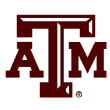 12. Texas A&M Aggies
12. Texas A&M Aggies
The Aggies’ schedule-makers did them no favors this season. Clemson is the out-of-conference draw. Georgia is the cross-division draw. And then there’s the old standbys of Alabama and LSU. The saying “Win and you’re in” certainly applies here, but it’s going to take a lot of wins to clear a path to the playoff.
But … there’s hope. Jimbo Fisher’s results in Year 1, going 9-4, instilled some confidence in College Station. Quarterback Kellen Mond is back after seeing his passer rating skyrocket by roughly 30 points. Retaining defensive coordinator Mike Elko was a big win during the offseason, and in tackle Justin Madubuike, he has a centerpiece to build around. — Scarborough
Yes, the Huskies lost nine defensive starters, but defensive coordinator Jimmy Lake did a great job of rotating enough guys that Washington won’t be devoid of defensive experience this fall. Washington has a slew of young, talented defensive linemen, led by Sam Taimani and Tuli Letuligasenoa. This could be a scary unit as the season progresses. Offensively, if Jacob Eason shows the five-star talent that got him to Georgia, this offense could really take off better than it ever has under Chris Petersen, especially with one of the nation’s best offensive lines. — Aschoff
 14. Utah Utes
14. Utah Utes
The preseason Pac-12 pick deserves to be seen as the conference’s top dog. Fifteen starters are back for the reigning South champs, and coach Kyle Whittingham thinks this is a stronger, tougher and more mature team. Quarterback Tyler Huntley has added 25 good pounds to his 6-foot-1 frame and had a good spring after coming back from his broken collarbone. Running back Zack Moss hit the 1,000-yard mark last year, and a defensive line featuring three seniors, led by end Bradlee Anae, stacks up with Clemson and Alabama and returns 23.5 sacks. — Aschoff
Trace McSorley isn’t walking through that door and neither is Miles Sanders. If Penn State is going to make it to the playoff, the offense is going to need playmakers to step up and emerge in 2019. Wide receiver K.J. Hamler has the ability to break a big play. What the team will really need, though, is for a few running backs to emerge from the group of Ricky Slade, Journey Brown and incoming freshmen Noah Cain and Devyn Ford. Former five-star wide receiver Justin Shorter and four-star receiver Jahan Dotson will need to pitch in as well in order for the Nittany Lions to have a shot at the playoff. — VanHaaren
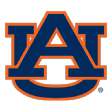 16. Auburn Tigers
16. Auburn Tigers
Gus Malzahn can go from the hot seat to next in line for a contract extension in no time. Win the season opener against Oregon and the entire outlook for the Tigers changes. Suddenly we’ll be talking about what they have on both sides of the ball and how this year they get Georgia and Alabama at home, where anything can happen.
Here’s the problem when you start talking about the return of Derrick Brown and how good that defense can be, or how promising young up-and-comers like Seth Williams, JaTarvious Whitlow and Anthony Schwartz are on offense: Who’s the quarterback? Is it Bo Nix or Joey Gatewood? And seeing as both are freshmen, can they be depended on? If one emerges and plays beyond his years, then this team could come together in a hurry. — Scarborough
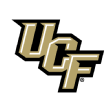 17. UCF Knights
17. UCF Knights
Is the College Football Playoff expanded to eight? Kidding, kidding. There is no doubt that among all the teams in the Top 25, UCF has the longest odds to make the top 4 because it plays in a Group of 5 conference. So that being said, UCF needs to help itself, and then get major help to have a shot. Let’s start with UCF. The Knights need a truly transformed Brandon Wimbush at quarterback to pair with returning standouts like Adrian Killins, Gabe Davis, Tre Nixon and Greg McCrae to help the high-powered offense.
The young defensive line, with three new starters, also must come together quickly, especially since run defense was a weak spot a year ago. Running the table is an absolute must. Plus, every Power 5 champion must have at least two losses (and possibly even more) for UCF to even get some consideration in the committee room. — Adelson
Either the game of coaching musical chairs that Mark Dantonio played this offseason works out, or the offense just stays far healthier than it was last year and finds a few extra points and yards between the couch cushions. The Sparty defense could be as excellent as ever, and the bar for the offense is low — MSU allowed 18 points per game in its six losses last season. Figure out how to stay on schedule a hair better, or turn scoring opportunities into points with more regularity, or just do something to assist the defense, and the sky’s the limit. — Bill Connelly
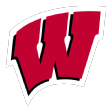 19. Wisconsin Badgers
19. Wisconsin Badgers
Wisconsin came within a touchdown of the CFP just two years ago, so we’re familiar with the recipe required. In 2017, the Badgers forced opponents to play one-dimensional ball with great run defense, then teed off on quarterbacks. Meanwhile, their ball control game was exceptional, and when they needed a pass on a third-and-6, they got one. In 2018, Wisconsin was mostly Wisconsin, but the run defense slipped slightly, and the passing game couldn’t catch back up to the chains when it needed to. The defense is more experienced this time around, but we don’t yet know about the QBs. — Connelly

20. Iowa Hawkeyes
The Hawkeyes return starting quarterback Nate Stanley, who threw 26 touchdown passes last season, but they lost tight ends T.J. Hockenson and Noah Fant and wide receiver Nick Easley, who all accounted for 18 of Stanley’s 26 touchdowns. The defense is returning quite a few starters, including defensive ends A.J. Epenesa and Chauncey Golston, and should be a strong point for the program. But if Iowa wants a shot at the playoff, the offense is going to need to find production from its receivers and running backs to replace what was lost. Receivers Brandon Smith, Ihmir Smith-Marsette and Nico Ragaini are going to be counted on as well as the trio of returning running backs Mekhi Sargent, Toren Young and Ivory Kelly-Martin. — VanHaaren
Even mentioning Iowa State and the College Football Playoff in the same sentence seems weird, but the Cyclones were close to a Big 12 championship game berth a year ago. The biggest win for Iowa State in the offseason was holding on to head coach Matt Campbell, who has thrust the program into the national spotlight in three seasons. It helps that four of the first five games are at home, but playing Oklahoma and Texas in back-to-back weeks on Nov. 9 and Nov. 16 is anything but ideal. Iowa State has all five starters back in the offensive line, and redshirt freshman guard Trevor Downing has been really impressive this preseason.
On defense, at least four returnees are All-Big 12 material — end JaQuan Bailey, defensive lineman Ray Lima, safety Greg Eisworth and linebacker Marcel Spears Jr. If sophomore quarterback Brock Purdy takes a big step, it’s not far-fetched to think that the Cyclones could at the very least be in the Big 12 race again come November.– Low
 22. Syracuse Orange
22. Syracuse Orange
Let’s jump into the “what if” machine for just a moment and travel back to Sept. 29, 2018, when the Orange had Clemson on the ropes in Death Valley. They led by 10 with less than 12 minutes to play before backup QB Chase Brice led an incredible comeback, including a 94-yard drive with two fourth-down conversions that culminated with a game-winning TD with 41 seconds to play.
Now imagine a scenario in which Syracuse wins that game. Maybe the Orange don’t fall to Pitt in overtime a week later, still nursing the post-Clemson hangover. They win the ACC. Their only loss is a neutral-site game vs. undefeated and playoff-bound Notre Dame. Wouldn’t a 12-1 Syracuse with a win over Clemson and an ACC title be a playoff team? And if we can create such a simple narrative for last year’s Orange, why not this year, when Clemson comes to the Carrier Dome and Notre Dame isn’t on the docket? The scary thing is that it’s really not so far-fetched. — Hale

Mike Leach is breaking in a new grad transfer quarterback (again) in Gage Gubrud, who registered more than 11,000 yards of offense and 100 touchdowns at Eastern Washington (Leach also said recently that Anthony Gordon could start at QB). Running back Max Borghi is bound to have a breakout year in 2019, while the QB will throw to four of the Cougs’ top five receiving targets from last year. The defense could be better in Tracy Claeys’ second year, even with star safety Jalen Thompson gone after being taken in the NFL supplemental draft. Shoring up the linebacker spots and replacing longtime leader Peyton Pelluer will be tall tasks, but this defense could be an annoyance in November. — Aschoff
Step 1: Adrian Martinez pulls a McKenzie Milton and plays at a nearly Heisman level as a sophomore, and the rest of the offense raises its game in a “rising tide lifts all boats” kind of way. Step 2: In key games against big, meaty rivals (Minnesota, Wisconsin, Iowa, etc.), the Huskers run defense steps up in a way it wasn’t ready to last season.
Step 3: Either beat Ohio State or lose only to Ohio State before beating an East heavyweight (OSU or otherwise) in the conference title game. Step 4: Marvel at another second-year miracle from Scott Frost. — Connelly
So much is new for the Cardinal this season. Only three starters are back on offense and five on defense. The good news is that quarterback K.J. Costello is back after his breakout 2018 season in which he threw for 3,540 yards and 29 touchdowns. With the departures of top receiving targets JJ Arcega-Whiteside, Trenton Irwin and Kaden Smith, and an iffy offensive line returning, Costello will need help from a running game that lost Bryce Love. Stanford will have to improve a defense that was one of the Pac-12’s worst last year, too. The good news is that Oregon, Washington and Notre Dame all have to go to Palo Alto this year. — Aschoff
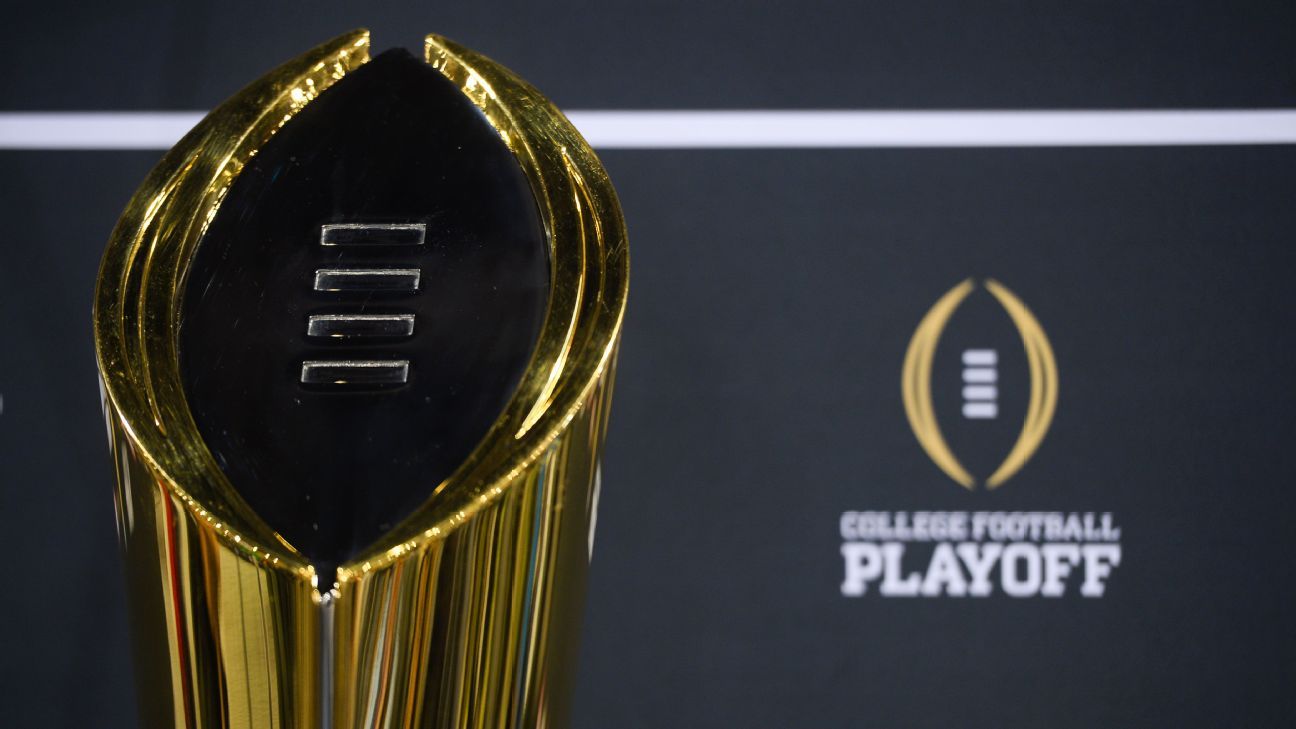
 1.
1. 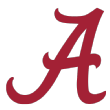 2.
2. 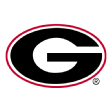 3.
3.  4.
4. 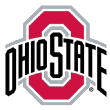 5.
5. 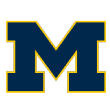 7.
7. 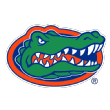 8.
8. 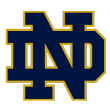 9.
9.  13.
13. 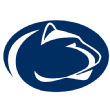 15.
15.  18.
18. 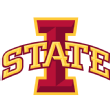 21.
21.  24.
24.  25.
25.